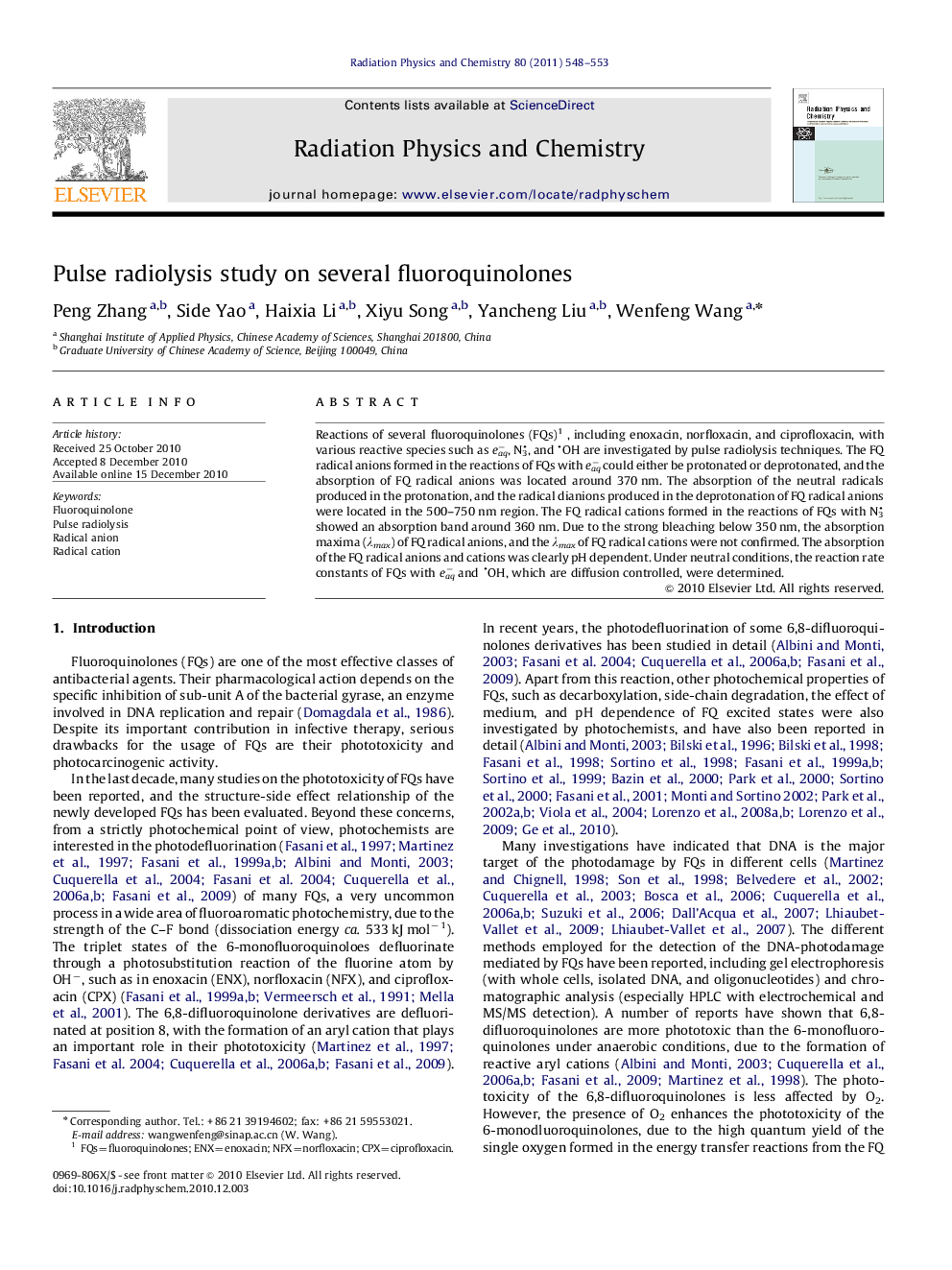| Article ID | Journal | Published Year | Pages | File Type |
|---|---|---|---|---|
| 10732076 | Radiation Physics and Chemistry | 2011 | 6 Pages |
Abstract
Reactions of several fluoroquinolones (FQs)1 , including enoxacin, norfloxacin, and ciprofloxacin, with various reactive species such as eaqâ, N3, and OH are investigated by pulse radiolysis techniques. The FQ radical anions formed in the reactions of FQs with eaqâ could either be protonated or deprotonated, and the absorption of FQ radical anions was located around 370 nm. The absorption of the neutral radicals produced in the protonation, and the radical dianions produced in the deprotonation of FQ radical anions were located in the 500-750 nm region. The FQ radical cations formed in the reactions of FQs with N3 showed an absorption band around 360 nm. Due to the strong bleaching below 350 nm, the absorption maxima (λmax) of FQ radical anions, and the λmax of FQ radical cations were not confirmed. The absorption of the FQ radical anions and cations was clearly pH dependent. Under neutral conditions, the reaction rate constants of FQs with eaqâ and OH, which are diffusion controlled, were determined.
Related Topics
Physical Sciences and Engineering
Physics and Astronomy
Radiation
Authors
Peng Zhang, Side Yao, Haixia Li, Xiyu Song, Yancheng Liu, Wenfeng Wang,
